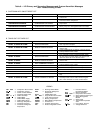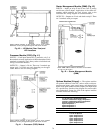
Table 9 — LID Primary and Secondary Messages and Custom Alarm/Alert Messages
with Troubleshooting Guides (cont)
N. OTHER PROBLEMS/MALFUNCTIONS
DESCRIPTION/MALFUNCTION PROBABLE CAUSE/REMEDY
Chilled Water/Brine Temperature
Too High (Machine Running)
Chilled water set point set too high. Access set point on LID and verify.
Capacity override or excessive cooling load (chiller at design capacity).
Check LID status messages. Check for outside air infiltration into
conditioned space.
Condenser temperature too high. Check for proper flow, examine cooling
tower operation, check for air or water leaks, check for fouled tubes.
Refrigerant level low. Check for leaks, add refrigerant, and trim charge.
Liquid bypass in waterbox. Examine division plates and gaskets for
leaks.
Guide vanes fail to open. Use Control Test to check operation.
Chilled water control point too high. Access control algorithm status
and check chilled water control operation.
Guide vanes fail to open fully. Be sure that the guide vane target is
released. Check guide vane linkage. Check limit switch in actuator.
Check that sensor is in the proper terminals.
Chilled Water/Brine Temperature Too Low
(Machine Running)
Chilled water set point set too low. Access set point on LID and verify.
Chilled water control point too low. Access control algorithm status and
check chilled water control for proper resets.
High discharge temperature keeps guide vanes open.
Guide vanes fail to close. Be sure that guide vane target is released.
Check chilled water sensor accuracy. Check guide vane linkage. Check
actuator operation.
Chilled Water Temperature Fluctuates.
Vanes Hunt
Deadband too narrow. Configure LID for a larger deadband.
Proportional bands too narrow. Either INC or DEC proportional bands
should be increased.
Loose guide vane drive. Adjust chain drive.
Defective vane actuator. Check through Control Test.
Defective temperature sensor. Check sensor accuracy.
Low Oil Sump Temperature While Running
(Less than 100 F [38 C])
Check for proper oil level (not enough oil). Check for proper refrigerant
level (too much refrigerant).
At Power Up, Default Screen Does Not Appear,
‘‘Tables Loading’’ Message Continually Appears
Check for proper communications wiring on PSIO module. Check that
the COMM1 communications wires from the LID are terminated to the
COMM1 PSIO connection.
SMM Communications Failure
Check that PSIO communication plugs are connected correctly. Check
SMM communication plug. Check for proper SMM power supply. See
Control Modules section on page 78.
High Oil Temperature While Running
Check for proper oil level (too much oil). Check that TXV valve is
operating properly.
Blank LID Screen
Increase contrast potentiometer. See Fig. 40. Check red LED on LID for
proper operation, (power supply). If LED is blinking, but green LED’s are
not, replace LID module, (memory failure)
‘‘Communications Failure’’ Highlighted Message
At Bottom of LID Screen
LID is not properly addressed to the PSIO. Make sure that ‘‘Attach to
Network Device,’’ ‘‘Local Device’’ is set to read the PSIO address. Check
LED’s on PSIO. Is red LED operating properly? Are green LED’s
blinking? See control module troubleshooting section.
Controls Test Disabled
Press the ‘‘Stop’’ pushbutton. The PIC must be in the OFF mode for the
controls test to operate. Clear all alarms. Check line voltage percent on
Status01 screen. The percent must be within 90% to 110%. Check
voltage input to SMM, calibrate starter voltage potentiometer for
accuracy.
Vanes Will Not Open In Control Test
Low pressure alarm is active. Put chiller into pumpdown mode or
equalize pressure. Check guide vane actuator wiring.
Oil Pump Does Not Run
Check oil pump voltage supply. Cooler vessel pressure under vacuum.
Pressurize vessel. Check temperature overload cutout switch.
NOTE: See Legend on page 68.
75


















